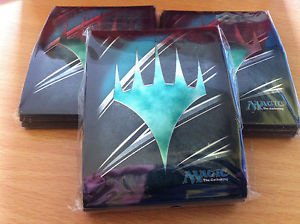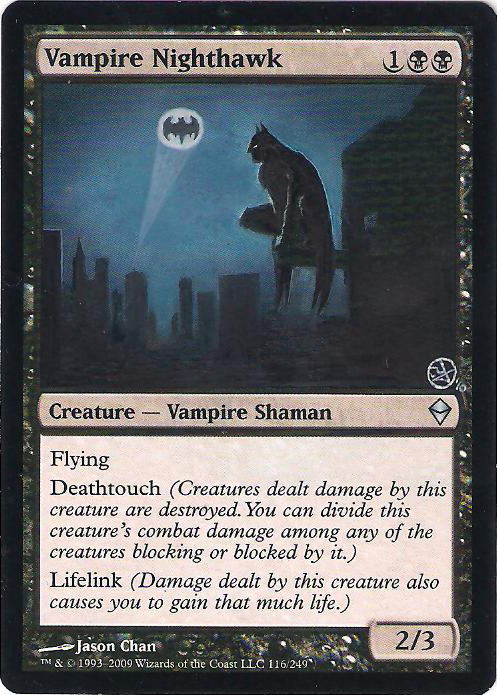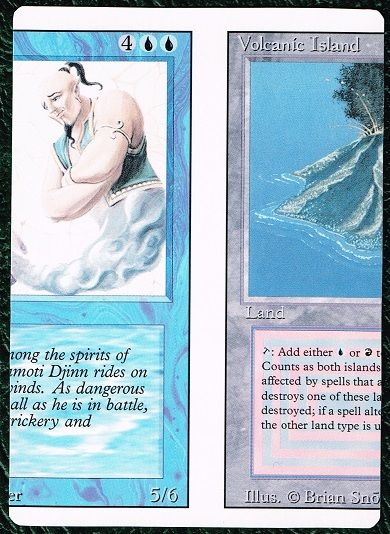You have been preparing for weeks, if not months, that big tournament, be it an FNM, a Game Day, a GPT, PPTQ, a GP, a WMCQ… you name it. It’s your big day and you’re going to fight your way through the tournament to reach the Top 8 and, who knows? Maybe you’ll rise triumphant with the victory in your hands. You’ve got everything ready: a solid and tested deck, some counters, a life pad, an awesome playmat, and probably some astonishing sleeves. Maybe some promo and foil cards or even some alters to give your deck a new glamour.
This is all very nice but, is your deck really ready for the battle? Sleeves in good shape, foil cards indistinguishable from the regular ones, checklist cards for your Magic Origins Planeswalkers, and alters that follow the guidelines? It’s never too late to make sure that your deck is following all the rules and you can go to the tournament feeling safe and avoiding those pesky infractions during a deck check.
Today, we’re going to go over all these points and we’ll see the potential consequences of not abiding by the rules along with some tips to prevent any problem. Let’s go!
Back to the basics
But, first, let me go over really quick about what makes a Magic card a legal card and everything we check during those fearful deck checks.
The point in doing deck checks is making sure that every card in a deck is, in fact, a legal Magic card, that they aren’t marked – (more on this later), and that the deck conforms to the deck construction rules.
Legal card? What in the world is a legal card? Let’s see what the MTR has to say about that:
[MTR 3.3 Authorized Cards]
(…) Players may use any Authorized Game Cards from Magic: The Gathering expansions, core sets, special sets, supplements, and promotional printings. Authorized Game Cards are cards that, unaltered, meet the following conditions:
- The card is genuine and published by Wizards of the Coast
- The card has a standard Magic back, is a double-faced card, or is a card that is part of a meld pair.
- The card does not have squared corners
- The card has non-silver borders.
- The card is not a token card.
- The card is not damaged or modified in a way that might make it marked.
- The card is otherwise legal for the tournament as defined by the format.
(…)
Almost every card we use in our deck is usually within these guidelines. The most popular kind of card that doesn’t is usually the Collector’s Edition cards with a golden border (and a different card back) and the Unglued/Unhinged cards with silver border. Of course, proxy cards (even those that have been made using what originally was a legal card) all fall in this definition, too. We can’t use these kinds of cards in sanctioned tournaments, as they do not conform to what a legal Magic card is per the MTR.
And, what if the card has a misprint? Of course, the MTR also covers that:
[MTR 3.3 Authorized Cards]
(…) Players may use otherwise-legal non-English and/or misprinted cards provided they are not using them to create an advantage by using misleading text or pictures. (…)
Cool, so that weird card that has another edition symbol or the border in a mismatched border colour (yes, [Serendib Efreet], I’m looking at you) may be used in tournaments if it’s not being confusing in any way, and always provided that we’re not trying to take advantage of this fact -which would fall under Unsporting Conduct – Cheating and would finish our journey through the tournament with a Disqualification and a further investigation by the DCI.
But, of course, everything has its limits. If a card is so much misprinted that we can’t be sure about what card actually is we’re going to be unable to play it. If it ever happens to you that you open such a card you may contact Wizards and see if they can replace it in some way. If you’re not sure if your cards may be played in the tournament always ask the Head Judge, if possible, before you begin playing and before you deliver your deck list, just in case you have to make changes.
The MTR has also some other things to say about legalities. The most important ones are these:
[MTR 3.4 Proxy Cards]
(…) A proxy card is used during competition to represent an Authorized Game Card that has been accidentally damaged or excessively worn in the current tournament (including damaged or misprinted Limited product) as determined solely by the Head Judge. Proxies are not allowed as substitutes for cards that their owner has damaged intentionally or through negligence. (…)
This basically means that a proxy (a replacement card) may be only created by the Head Judge and only for the current ongoing tournament. Pretty easy.
We’ve also got some notes about double-sided cards:
[MTR 3.5 Checklist cards]
(…) Official checklist cards are used to represent double-faced cards in the sets that contain them. Only official checklist cards may be used to represent double-faced cards in a deck.
The use of checklist cards is required if a player has double-faced cards in his or her deck and is not using completely opaque sleeves.(…)
In short, this means that we can only use this checklist cards that we can find on Innistrad packs (covering Innistrad, Dark Ascension, Shadows over Innistrad, and Eldritch Moon) and Magic Origins packs to represent double-sided cards in our deck. It’s important to note that we must use them if we’re playing double-sided cards and we’re not using sleeves or if they are transparent (or see-through). If not, we’re introducing marked cards in our deck and we could be given a Warning or even a Game Loss as the IPG notes on its 3.8 point, Marked Cards.
Suit up
Now that we know which cards we may use it’s time to suit them up. In the market, we’ll find a great range of sleeve brands and qualities, and choosing one is something we’ll leave up to you. The only thing you have to know for doing that is this:
- All sleeves in your deck must be identical;
- At Competitive and Professional Rules Enforcement Levels you may not use reflecting or holographic sleeves;
- Sleeves must be in good shape: they may not be marked, folded, or broken, and must not interfere in any way when you shuffle your deck;
- If they have some kind of holographic seal (like the brand or a seal of authenticity) it must be on the front, never on the back.

When sleeving your deck there’s something you have to keep in your mind, something that most of the times we forget: the sleeves are made by machines in batches, and sometimes a batch may be slightly different from another one, even if the sleeves are the same brand and model. In practice, this means that they may have some marks and can leave your deck with a pattern of marked cards. To avoid this, always shuffle your sleeves or your cards (or both!) before sleeving the deck up. This way, if there are any kind of marks on your sleeves, they will be left shuffled among all the cards with no visible pattern for you or your opponent, saving you from some nasty surprises during a deck check.
That’s pretty much everything, adding what we said about double-sided cards before. When we check your deck these are the kinds of things we’re looking for.
Oh, and one more thing: there are some incredible illustrated sleeves out there that are a great way to improve the looks of your deck for cheap, but remember that this kind of sleeves are usually looked upon with more detail as they’re easily marked. Most of the times the illustration is printed as an overlay and then glued to the sleeve surface, which makes it easy to peel off on the borders. Sometimes the illustration is printed with a glossy finish and that makes it more prone to scratches. Be careful with them!
What could happen if the sleeves do not follow these guidelines? Three different things, in fact: first, the Head Judge (or, in bigger tournaments, the deck check team leader) may ask us to change our sleeves. They may ask us to change them immediately (if the damage is too severe) or at the end of the round. It could happen that we get a Warning for marked cards, and even, if they show some kind of pattern (like having a playset of a card marked or all -or most- of the basic lands), we may get a Game Loss. You see, this is no joke.
Foiled again!
Some players enjoy playing with premium foil cards. These cards work exactly like their non-foil counterparts except that they have a shiny finish. The cards you usually get by playing FNMs, GPs, and Game Days are like these, even if some of them feature different artwork than the non-promo ones. These kinds of cards are really popular among players that want to give their decks a more personal touch.
But, alas, if I’m talking about them is because there’s some potential issue with them, isn’t it? And that’s because, as many of you may already know, they’re really prone to bending by the effect of temperature and humidity. It may sound like a joke, but it’s, nevertheless, very true!
It happens that some sleeves are not sturdy enough to keep these cards from bending. If this happens, they may become noticeable while in your deck. And that’s, of course, a problem: it’s also considered Marked Cards. Eek!
The easiest way to fix this problem is, obviously, not using foil cards. But since I and many others are not going to give up on their beauty we’ll need some other solutions. There’s no ultimate fix but here are some tips nonetheless:
- If you’re using foil cards try to balance the number of foil and non-foil cards in your deck. In other words: try to avoid a pattern. For example, if you’re playing a monowhite deck, definitely do not use Dragon’s Maze promo foil Plains as your only lands, or don’t play an entire playset of promo Liliana of the Veil as your only foil cards, as much cool as they are;
- Try to unbend the bent cards applying some force: sometimes bending the cards in the opposite direction do straighten them a bit;
- Use inner sleeves (also known as Pro-Fit or Perfect Fit). These kinds of sleeves are a tight fit for cards and force them a bit to keep their shape. Using them alongside some sturdy outer sleeves will help to keep foil cards in check;
- Store your foil cards in tightly-closed boxes or use Silica Gel packs (those small bags that sometimes come with new shoes). This gel is very good at absorbing ambient humidity and will prevent it from bending your cards. You can also find similar products in general stores for closets if you happen to store your cards in them.
My personal tip is to keep a good balance in foil and non-foil cards in your deck. Don’t foil up all your lands (without having other foiled cards) as well an entire playset of them, and, of course, always check if your foiled cards have bent and they’re noticeable while shuffled in your deck. To check this shuffle your deck as you would normally do and then put it face down on the table. If by looking at it from the front you can tell where your foil cards are then those cards are marked and you’ll need to seek a solution.
Pimp my card
To conclude all this legal and illegal cards mess, let’s go to the probably most controversial point of them all: artistic alterations. What’s an artistic alteration, you may ask? It involves taking an original Magic card and performing modifications on its art to make it more personal. Alterations come in every imaginable flavour: from fantastic artistic alterations to hilarious humoristic ones. These modifications need to follow some guidelines, though.
It’s always important to bear in mind that alterations are allowed in sanctioned tournaments only if they follow these guidelines. The MTR has us covered:
[MTR 3.3 Authorized Cards]
(…) Artistic modifications are acceptable in sanctioned tournaments, provided that the modifications do not make the card art unrecognizable, contain substantial strategic advice, or contain offensive images. Artistic modifications also may not obstruct or change the mana cost or name of the card. (…)
In short:
- The card’s art must be recognisable;
- It can’t add substantial strategic advice;
- Must not be offensive in any way;
- Must not obstruct the card’s name and mana cost.
If our card is following these four points we’re most likely good to go. Unfortunately, some of these points are purely subjective: what is offensive may vary from person to person, and the limits on whether the art is still recognisable or not may also be debatable.
This is why, before beginning to play in a tournament, we must always ask permission to the Head Judge to use our altered cards. The final decision always belongs to them, and if they decide that our card is not acceptable we’re going to need to replace it, and if we have already handed over our deck list we’ll need to find an exact, unaltered, replacement or face a Game Loss.
As this, it’s always important to do this first before starting the tournament. If an altered card is discovered later and the Head Judge deems it unacceptable we’re going to face penalties for Tournament Error – Deck Problem. Even if you have played before those cards without problems when going to a new tournament you need to ask that specific tournament’s Head Judge, as their decision may vary from judge to judge. Let me repeat myself once more: always check with the Head Judge if you can play your altered cards before handing over your decklist!
Unacceptable alterations may have additional penalties attached if they are considered an infraction under the tournament rules. For example, offensive alterations may merit an Unsporting Conduct – Minor or Unsporting Conduct – Major penalty, depending on the way they’re considered offensive. Reading the IPG can help you understand this point better.
Last but not least, altering a card to add strategic advice can be considered Tournament Error – Outside Assistance, as it’s the same as checking annotations on a paper, getting advice on your cell phone, or any other way you may receive such information.
So, if you don’t want to get a Match Loss avoid adding such information on your alteration. This information can take any form, be words or pictures, explaining how the card works or suggesting plays. Don’t write -or represent in any way- Elesh Norn and Unburial Rites on your Gifts Ungiven!
So long
Wow, this has been a very long article, but I really hope that you’ll find all this information useful someday.
If we want to put all this, in short, we could just say this: check your deck before attending any tournament, check your sleeves and marked cards, and always check with the Head Judge if you’re going to play altered cards. All these can’t take more than 5 minutes and will keep any potential problems at bay. Replacing sleeves in a regular fashion is always a good idea, too, even more, if you’re planning to attend an important tournament like a GP or PPTQ.
This is all for today. Remember that there’s always a Judge near you ready to share their knowledge, via Twitter, Facebook, Chat, and, of course, in your local community -ask for them if you didn’t already meet them!
See you next time. Until then, may your cards stay safe from any nefarious marks.

